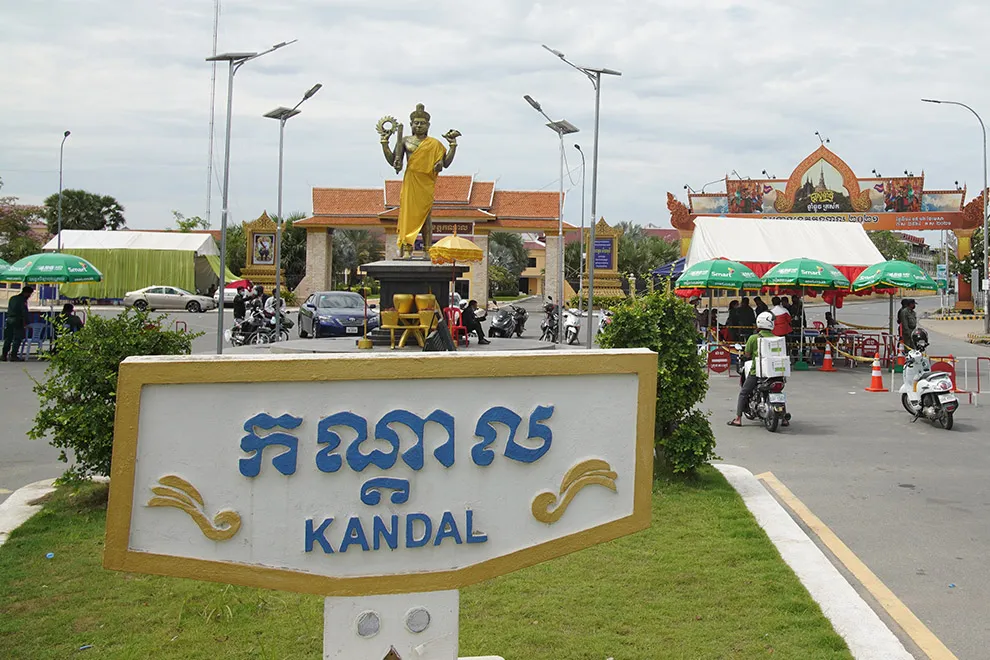Kandal Province serves as the critical economic and geographical gateway to Cambodia’s capital, Phnom Penh. Encircling the capital entirely, Kandal is uniquely positioned to capture massive real estate spillover and industrial development, making it a prime target for Kandal Investment. Its economy is distinctively dual, balancing modern industrial and residential growth with robust traditional agricultural production.
This report provides an analytical overview of Kandal’s structure, economy, and investment potential, tailored for Land Developers, International Investors, and the General Public.
I. Key Geographical and Administrative Data (2024 Estimates)
| Key Data Point | Detail |
| Administrative Status | Province |
| Capital | Takhmao City |
| Postal Code | 08000 (08XXX) |
| Total Area | 3,568 square kilometers (km²) |
| Total Population | Approximately 1.3 million (2024 estimate) |
| Border | Borders Phnom Penh, Kampong Speu, Takéo, Kampong Cham, Prey Veng, and Vietnam to the East |
| Administrative Structure | 11 Districts, 147 Communes (Khums/Sangkats), and 1,087 Villages |
| Major Tourist Sites | Oudong Mountain (Former Capital), Wat Phnom Thmor, Kandal Floating Village |
II. Connectivity and Real Estate Spillover from Phnom Penh
Kandal’s identity is inseparable from its role as the ring around Phnom Penh, leading to dynamic real estate spillover and urbanization.
1. Geographic and Infrastructure Connectivity
Kandal acts as a major logistics and transport corridor, connecting the capital to Vietnam and other provincial hubs via key National Roads (NRs) and waterways.
- Road Network: National Roads 1, 2, 3, 4, 5, and 6 all pass through Kandal’s districts.
- Ring Road 3: The completion of Phnom Penh’s 3rd Ring Road has dramatically enhanced Kandal Investment by improving freight access and reducing transit times, thereby transforming peripheral districts into prime industrial and logistics zones.
- Phnom Penh Satellite City: Several districts bordering the capital are rapidly developing into Phnom Penh Satellite Cities, offering more affordable land and larger development spaces for housing projects (Boreys) and commercial centers, catering to the growing urban population.
2. Real Estate Investment Potential
The land price appreciation in Kandal, particularly in districts like Kandal Steung, Takhmao, and Arey Ksat , is among the highest in the country outside the capital core. The area offers developers the scale needed for large-format residential and mixed-use projects.
III. Robust Industrial Zones and Manufacturing Base
Kandal has firmly established itself as a major industrial corridor, critical for manufacturing exports.
1. The Garment Sector
The province is home to a high concentration of manufacturing facilities, primarily Many garment factories (textiles, footwear), which benefit from competitive operating costs and proximity to the Phnom Penh port facilities and major transit routes.
2. Emerging Industrial Diversification
Beyond garments, the industrial base is diversifying into construction materials, food processing, and logistics hubs, particularly around the National Road corridors. The availability of large land parcels and established utilities makes Kandal an attractive option for new foreign direct investment (FDI) in light manufacturing and assembly.
IV. Core Agricultural and Fishery Sectors
Despite rapid urbanization, agriculture remains a foundational pillar of Kandal’s economy and its unique provincial identity.
1. Key Agricultural Products
Kandal benefits from fertile land and ample water access, supporting substantial commercial farming. Major products include:
- Rice: As a major rice bowl near the capital, it ensures local food security.
- Vegetables and Fruits: Supplying the majority of fresh produce to the Phnom Penh market.
- Industrial Crops: Other significant products include palm oil, peanuts, and pepper. The cultivation of these high-value crops provides consistent income streams and opportunities for agro-processing investment.
2. Fisheries and Water Resources
With the Mekong River and extensive tributaries running through the province, the fishery sector is vital. The Basac and Mekong rivers are central to local livelihoods, supporting fishing and aquaculture, which in turn feeds the urban demand of Phnom Penh. Investment opportunities exist in modernizing cold storage and processing facilities for both agricultural and fishery outputs.
V. Economic Outlook and Investment Promotion
Kandal Province presents a compelling case for investment driven by its strategic adjacency to Phnom Penh and its dual-sector economy.
1. Investment Advantages
- Location: Immediate access to the capital’s consumer base and logistical infrastructure.
- Labor: Access to a large, cost-effective rural and semi-urban labor pool.
- Diversification: Opportunities in both modern (industrial, real estate) and traditional (agriculture, processing) sectors.
2. Future Growth Trajectory
The future economic trajectory of Kandal Province will be defined by its seamless integration with the capital as the Phnom Penh Satellite City concept fully materializes. Investment, particularly in suburban residential projects, industrial parks, and integrated logistics facilities, is expected to maintain strong momentum over the coming decade, making Kandal one of Cambodia’s most dynamic investment destinations.

